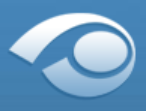We all know that two-factor authentication is a Good Thing. Having said that, we have all known from the moment (thirteen years ago) when USPTO rolled out its awkward Entrust java applet approach for access to PAIR and EFS-Web, that it was a Bad Thing. Yes it provides two-factor authentication. But it provides the two-factor authentication in a very poorly designed way. Every year or so I have blogged (over and over and over again) about the need for USPTO to scrap that Entrust java applet approach in favor of any of a number of much more user-friendly types of two-factor authentication.
Having said all of this, the plain fact is that for thirteen years now, USPTO has stubbornly stuck with this poorly designed Entrust java applet approach for PAIR and EFS-Web that it adopted in 2004. The approach is tied to an all-important “EPF file” which is the second of the two factors (in addition to a password). If you don’t have your EPF file with you at the computer where you are trying to log in, or if you misplace the EPF file, or if it expires (which almost always happens without warning) then it is impossible to log in to PAIR or EFS-Web.
Which prompted a member of the PAIR listserv to ask this question:
Is there any reason I can’t store the EPF file on a USB thumb drive? That way I can put it on a physical keychain, use it at any computer, and if it is renewed (whenever that is), I am always using the most recent certificate?
The answer, as I will discuss, is sort of “yes” but with drawbacks. Continue reading “Can you put your EPF file on a thumb drive?”
 As I mentioned in an earlier blog article, the fee that ISA/SG charges per invention to carry out a PCT search will increase on November 1, 2017. The fee charged in US dollars will increase from $1552 to $1645.
As I mentioned in an earlier blog article, the fee that ISA/SG charges per invention to carry out a PCT search will increase on November 1, 2017. The fee charged in US dollars will increase from $1552 to $1645.
 A week ago
A week ago 
